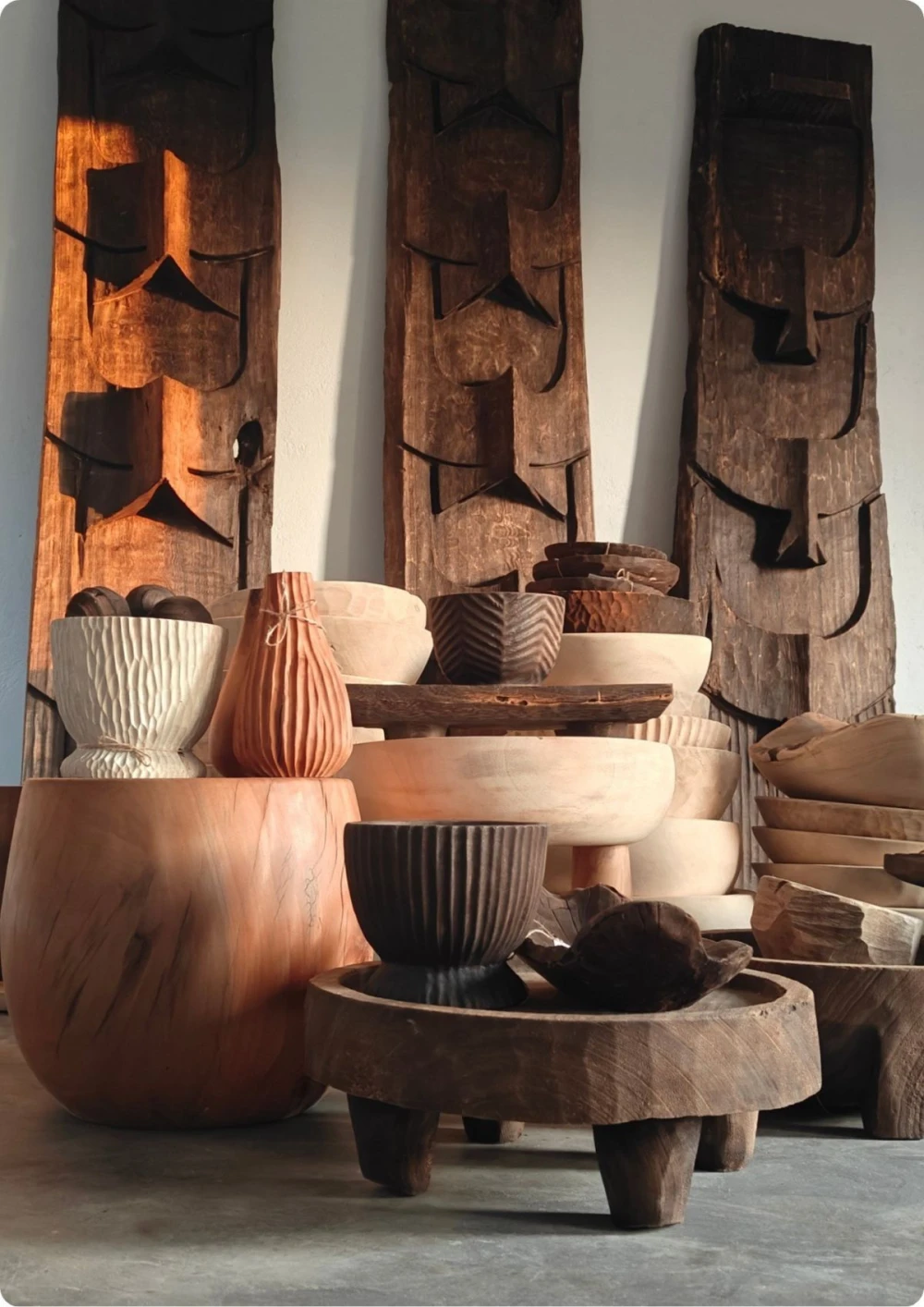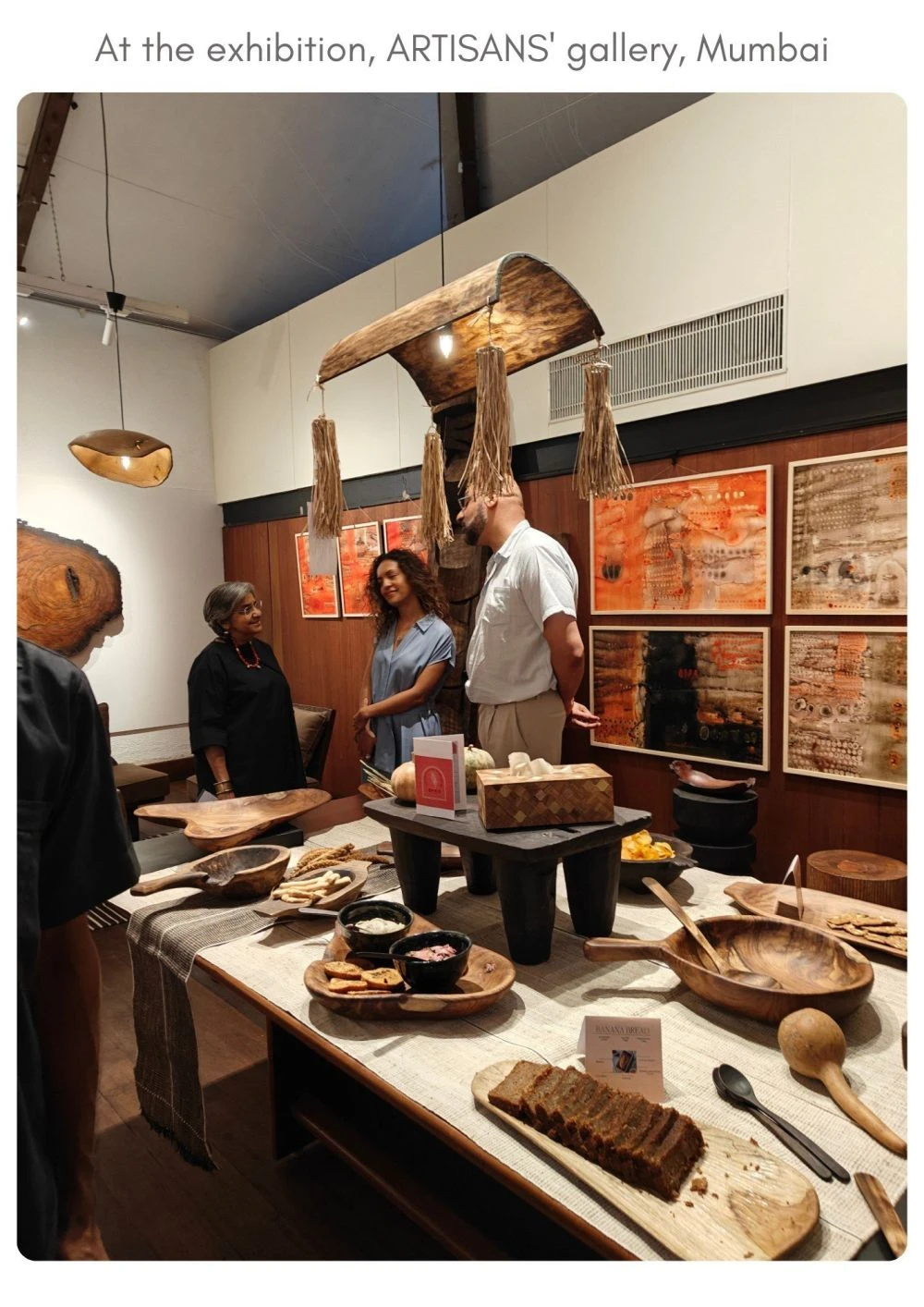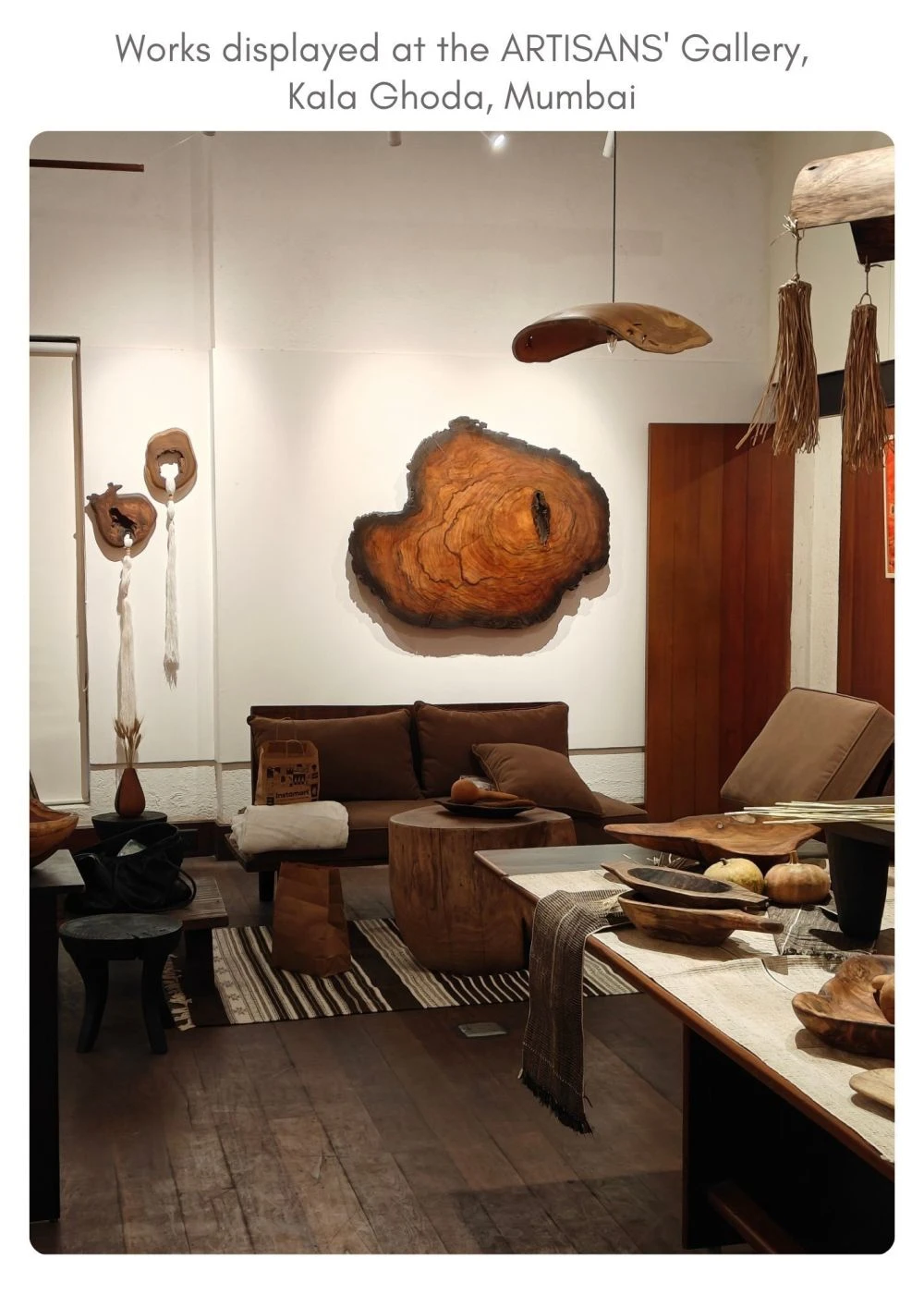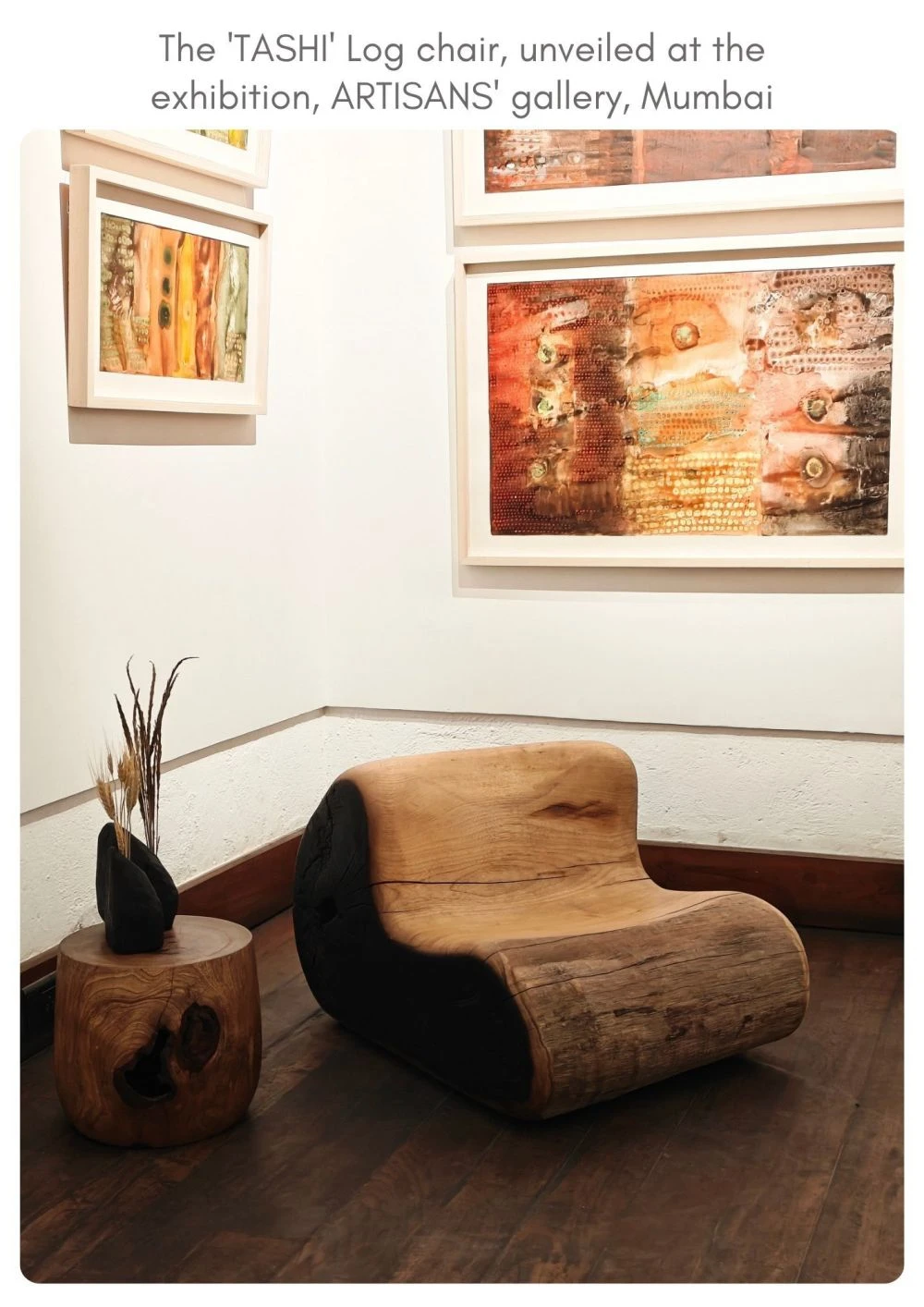Ajung Yaden and Atem Longkumer at their studio in Eralibill, Dimapur.

Morung Express News
Mumbai | June 16
The ARTISANS’ Centre for Creative Arts in Mumbai is currently hosting ‘Elemental’, a striking exhibition by TRIBOLT, the celebrated furniture designer-makers from Nagaland. Artists Ajung Yaden and Atem Longkumer showcase their profound connection to Naga craft traditions and nature, working with wood in its most authentic form—embracing its natural cracks, markings, and imperfections as part of their creative process.

Originally scheduled until May 31, the exhibition has been extended to June 30 due to overwhelming public demand. TRIBOLT, known for its fusion of traditional Naga craftsmanship and contemporary design, presents a collection that explores raw, organic forms through wood and it has captivated art lovers and collectors alike.

Furniture designer-makers Ajung Yaden and Atem Longkumer left their secure careers to embark on a journey to reconnect with their Naga heritage. Together, the husband and wife duo, founded TRIBOLT, transforming a lifelong passion for woodworking and design into a profession. TRIBOLT honours the authenticity of Naga craft and culture, and its deep connection to nature. With wood as their medium, Ajung and Atem embrace to the innate qualities that make each piece of wood unique - its cracks, markings, and flaws—allowing the material’s natural character to guide their designs.

“Our work is characterised by a deliberate embrace of imperfections, letting each mark in the wood tell its own story. Our ancestors lived a beautifully organic life. Every piece of furniture in their homes, from the beds they slept on, the stools they sat on, to the plates they ate from, were hewn from wood, and they were raw, pure, bold and honest. These are the qualities we strive to represent in our work.”

Each piece is designed and crafted by Ajung and Atem. Ajung learned woodworking from his father and crafted his first piece of furniture by the age of fourteen. For him, shaping wood is second nature, an instinct honed through years of practice and deep-rooted tradition.
The artists believe “Naga” is more than just style or design, it goes beyond mere aesthetics. “We believe that in order to be able to create designs inspired from a certain culture or community, one must truly “own” the indigenous way of life, deeply integrate into and uphold the values, traditions, and practices of that specific indigenous community, one must truly “belong” there,” they asserted.

Their practice is totally immersed in nature, as they moved out of the city and settled in the rural countryside. “The natural surroundings are the source of our inspiration, and also act as our workplace, throughout every season.”
Sharing more about their creative process, Atem and Ajung said, “We shape wood with simple hand tools which have long been used for carving - including the legendary Naga Dao or machete. We leave traces of our woodworking on our pieces, adding stories to the character already present in the wood. The conversation starts when cutting into a log and discovering what is inside. We then ask ourselves - what is the best thing we can make from this? What would be inherently beautiful?”
The artists disclosed that they combine traditional Naga wood carving techniques and tools with contemporary style in their furniture and interior designs, forming hybrids of the modern and ancient; keeping in mind comfort, ergonomics and functionality for a more western lifestyle. “To imagine a design in your mind and be able to craft and build it with our own hands, while infusing it with the wisdom passed down through the generations, is truly both humbling and gratifying.”



